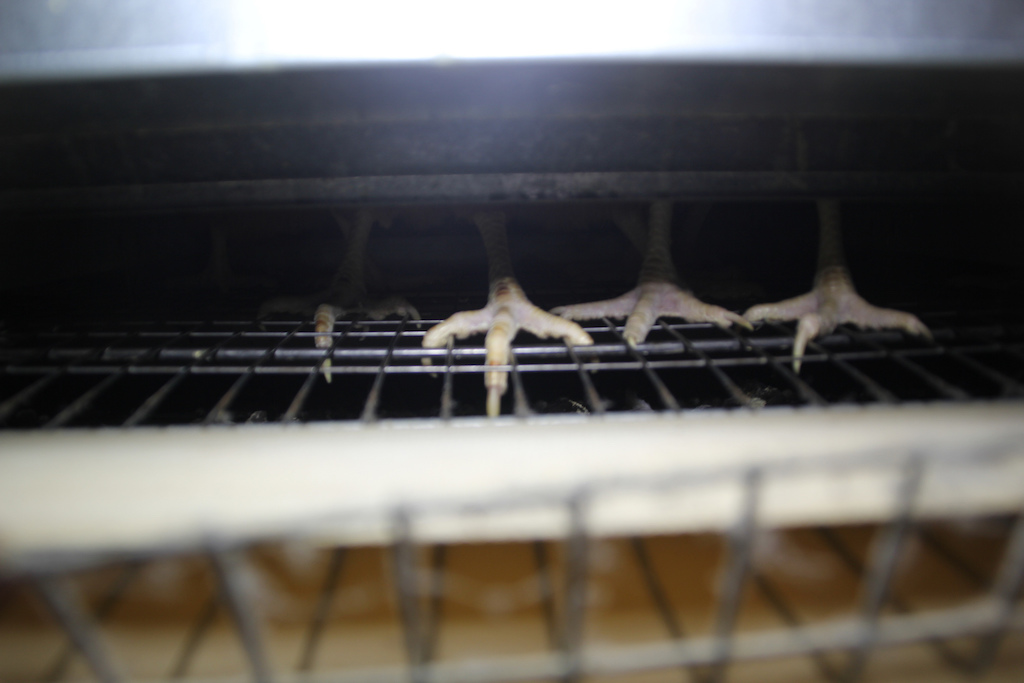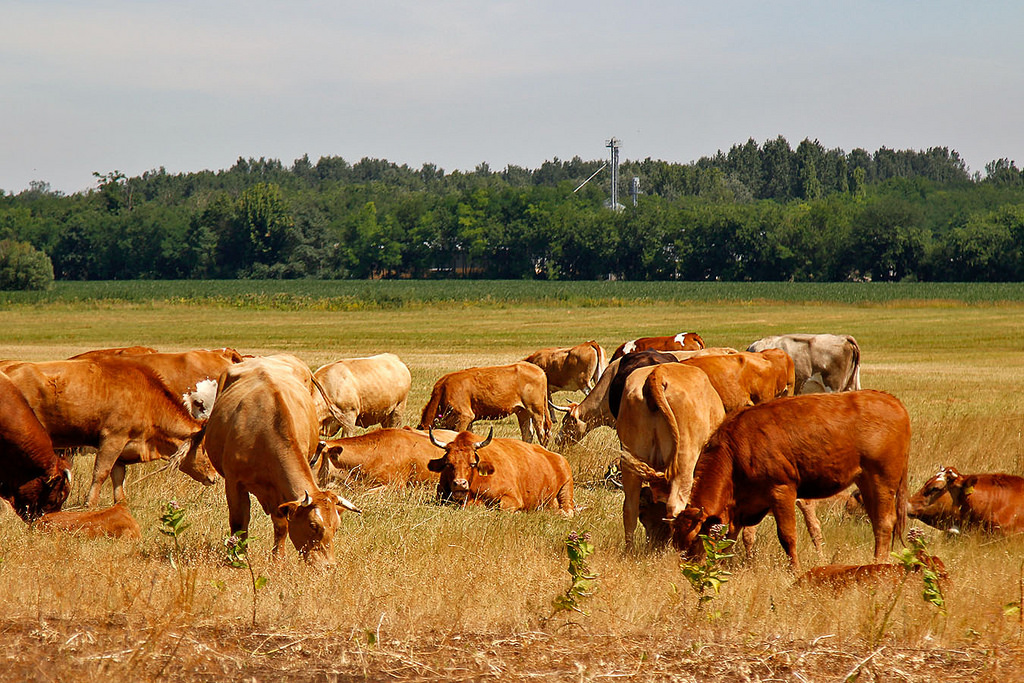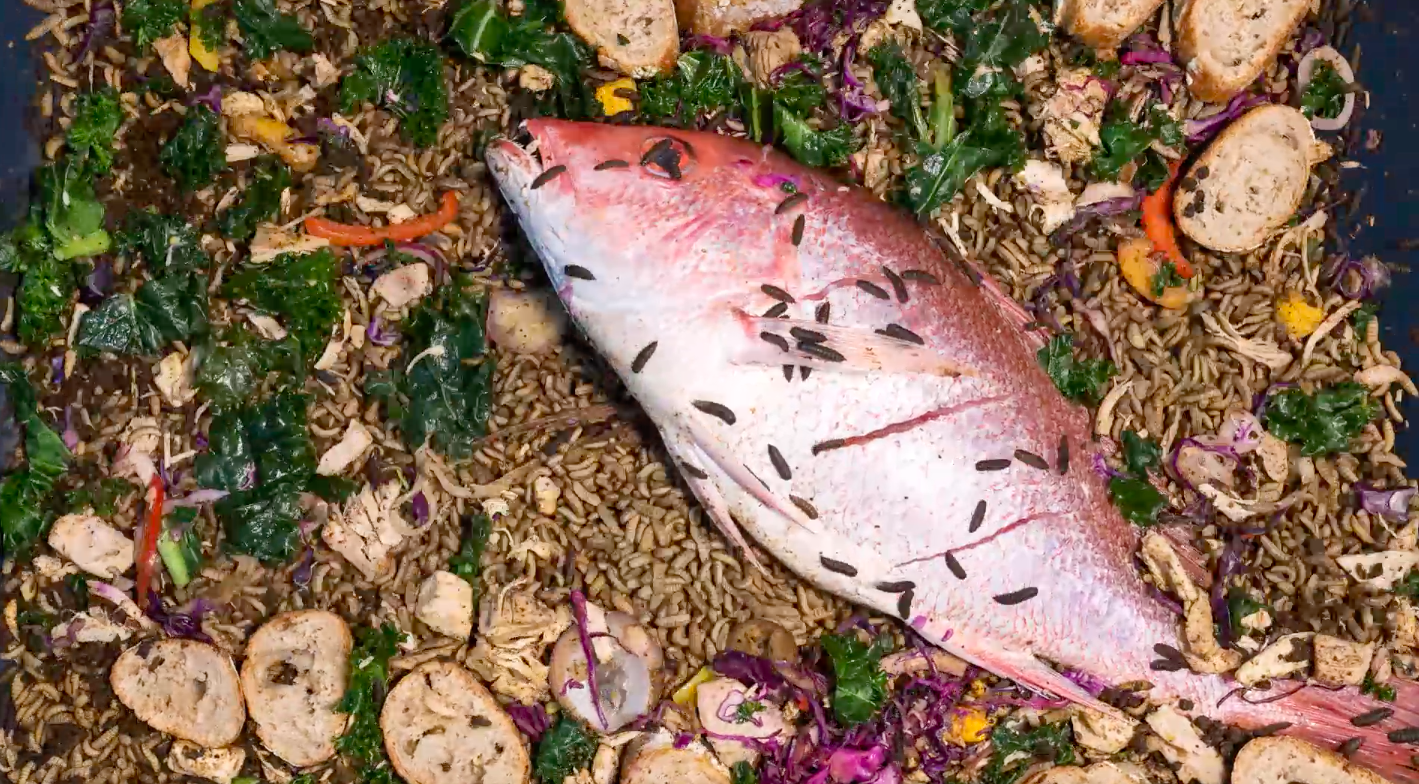Organic milk, eggs or chicken may have come from factory-farmed animals. A long-delayed rule was supposed to change that. Now it’s up to Trump’s USDA.
Update 11/9/2017, 4:49 p.m., EST: As of Thursday morning, the United States Department of Agriculture (USDA) has again delayed the effective date of the Organic Livestock and Poultry Practices final rule, published in the Federal Register on January 19, 2017, until May 14, 2018.
Formal announcement of the delay is slated to publish in the Register on November 14—the same day Secretary of Agriculture Sonny Perdue was expected to issue a final decision on the rule.
These days, it’s fair to say that the organic industry is fraught from one end of the supply chain to the other. Recent scandals over sham organic imports due to lax oversight, and the battles over “hydrorganics” join ongoing controversies about the relative food safety, nutritive, and environmental benefits of agricultural products produced under the National Organic Program (NOP). If you’ve caught wind of reports that the organic milk, eggs or chicken you’ve bought may have come from domestic factory-farmed cows and chickens, it’s reasonable to question the value of buying foods bearing the USDA organic seal at all. Especially when you’re paying about twice the cost of nonorganic.
What’s been drowned out of the organic news, though, is how a coalition of organic stakeholders—a veritable army of unlikely collaborators—recently cried “foul” on the United States Department of Agriculture (USDA) for blocking new organic animal welfare rules set to go into effect this year. Citing harm to organic farmers, certifiers, retailers, animal welfare advocates and consumers, the Organic Trade Association (OTA) sued the USDA in September.
Its demands? Enact transparent, consistent, and uniform standards of care for livestock and poultry to bring USDA organic into line with its stated mission: “Organic integrity from farm to table, consumers trust the organic label.”
With every retailer from Walmart and Albertson’s to mom-and-pop stores embracing organic foods to meet surging consumer demand, everything is on the line for the $43 billion organic food industry. And it all hinges on our trust in a little green-and-white seal.
Everything is on the line for the $43 billion organic food industry.
The entire organic community is on tenterhooks until November 14, awaiting a decision from USDA on the new organic animal welfare standards. Whether the final decision comes by way of the agency itself or a federal judge, it will determine the integrity of the organic label, the livelihoods of most organic farmers, and the treatment of the 60 million animals raised on certified organic farms in the United States.

When it comes to livestock and poultry, the USDA organic seal indicates that the animals were raised without antibiotics, growth hormones, or animal by-products
Before diving into the animal welfare conflict at hand, let’s clear up a few things about organic animal products. “Organic”—the term—is imbued with a holistic conception of agricultural systems that support biodiversity, regenerate the soil, and promote animal health and wellbeing. As a pushback against industrialization and the impacts of confined animal feeding operations (CAFOs) on water, land, air, and animals, organic is bundled into the ideals of environmentalism. As a result, the term has taken on such a halo effect that many shoppers believe the organic seal already means that the chicken breasts they buy came from broilers that pecked and scratched on lush pastures in full sunshine.
Not in the eyes of USDA. Administered by the Agricultural Marketing Service (AMS) of USDA, “organic” is a marketing term applied to agricultural food and fiber products that meet specific production standards. When it comes to livestock and poultry, the USDA organic seal indicates that the animals were raised without antibiotics, growth hormones, or animal by-products. Their feed was 100 percent certified organic and contained no genetically modified organism (GMO) ingredients or unapproved synthetic pesticides or herbicides (although USDA organic does allow some pesticides).
But there’s more. The regulations also specify that all animals should have year-round access to the outdoors (except during certain conditions, such as extreme weather events) with “fresh air” and “direct sunlight.” And they explicitly prohibit “continuous total confinement.”
While “outdoors” sounds unambiguous to you and me, the interpretations of this directive vary in every industry, from milk and cheese to chicken and pork. But it found its most extreme expression in egg production. The USDA estimates that half of all organic eggs sold today come from hens living in continuous total confinement.
How did this come to be?

Organic eggs—or rather, laying hens—are at the epicenter of this organic crisis
It seems petty to focus on organic eggs when you’re talking about the treatment of millions of farm animals. And yet, organic eggs—or rather, laying hens—are at the epicenter of this organic crisis. Eggs have already received most of the media attention surrounding the organic animal welfare rule and lawsuit. So, here is a Wikipedia-like version of events to pinpoint the bone of contention.
In 2002, six months after the NOP published its final rules on the outdoor requirement, a Massachusetts egg producer called Country Hen was denied organic certification. The company appealed to the AMS, asserting that roofed, screened-in porches for laying hens should qualify as outdoor access. Without input from the agency’s legal advisory body, the National Organic Standards Board (NOSB), AMS agreed and directed the certifier to approve Country Hen’s application. And ever since, this company—and every egg producer that built a porch onto a barn and called it the great outdoors—could get certified and collect their egg money.
Our two-part series on the true meaning of “pasture-raised” egg production and what it looks like at scale.
Lots of egg money. In the ensuing 15 years, as the organic market has bloomed, a few massive and influential shell egg companies — including Herbruck’s Poultry Ranch in Michigan, Rose Acre Farms in Indiana, and Hidden Villa Ranch in California — that represent just five percent of all U.S. egg producers, have dominated organic egg sales. And they do not want to give up their rapidly growing market share or their cost of production advantages from raising millions of birds in multistory aviaries.
The other 95 percent of organic egg farmers are up in arms, along with consumer groups, certifying agencies, and trade groups insisting that USDA provide the necessary oversight once and for all.

The new organic animal welfare rule—among many other significant provisions for livestock and poultry care, living conditions, transport, and slaughter—outlaws porch systems
The unintended consequence of the Country Hen decision was to cleave the organic industry in two. On one side, the majority of organic farmers living up to the spirit of the law versus a handful of agribusinesses using a loophole to gain market advantage. “There are two organic labels. They both have that green logo,” says Mark Kastel, director of The Cornucopia Institute, an industry watchdog and advocacy group that blew the whistle on egg operations that meet the government’s definition of a CAFO. “One is really organic and one is faux organic,” he says.
The new organic animal welfare rule—among many other significant provisions for livestock and poultry care, living conditions, transport, and slaughter—outlaws porch systems. As a result, it pits industrial-scale producers (and their lobbyists) against nearly every other organic egg producer, from large- to small-scale. And the USDA’s AMS stands in the middle of the political fray.
What was immediately apparent was that the NOP set the framework but failed to specify clear standards and metrics. This is where the NOSB came in: the public advisory body made up of farmers, scientists and other informed citizens to guide NOP regulations. Since 2001, the NOSB has submitted both formal recommendations supported by public comment (more than 47,000 in the most recent comment period) and a damning audit by the USDA Office of the Inspector General to address the outdoor access issue.
In 2010, the NOP published the Access to Pasture rule for cattle and sheep requiring that these ruminants graze for at least 120 days per year. The new organic rule, which similarly fills in the blanks about what outdoor access means for poultry, is only the second time the AMS has amended organic regulations. “The understanding was that these [standards] were going to be developed over time,” says Laura Batcha, OTA’s CEO and executive director. “It’s an issue of government stopping regulations from happening.”

It was the USDA under President Obama that dragged its feet for years on clarifying the organic standards, despite double-digit growth in the organic market
The OTA lawsuit alleges that USDA is stonewalling a rule that was years in the making through an exhaustive, transparent, and inclusive process. Published in the Federal Register on January 18, 2017, the final rule, officially called “Organic Livestock and Poultry Practices,” was slated to go into effect in March of this year. But in early February, USDA delayed the rule for 60 days for “further consideration,” then tagged on an additional 180 days, with a decision to be issued by Secretary of Agriculture Sonny Purdue on November 14.
In an extraordinary move, USDA also published a second proposed rule and requested public comment on four possible actions for the original final rule: enact it, suspend it, delay it, or withdraw it. The OTA smelled politics at work and, with 100 percent support of its governing board representing 9,500 organic industry members, sued to force USDA’s hand to enact the final rule immediately and as written.
It would be easy to blame the anti-regulatory Trump administration for the series of delays. But it was the USDA under President Obama that dragged its feet for years on clarifying the organic standards (only to release the final rule on the eve of Trump’s inauguration), despite double-digit growth in the organic market and heightening consumer expectations about animal welfare issues.
The lawsuit has unified a diverse group of organic stakeholders to break the industrial agriculture power grab and enact the corrective animal welfare rule they hope will establish a level playing field by creating an unambiguous and enforceable USDA organic standard for outdoor access.
If only enforcing any animal welfare regulation was a straightforward endeavor.

With nearly every major American food, food service, and retail company committing to go cage-free by 2025, the food industry at large is shifting away from the extreme confinement of factory farming.
Federal laws protecting farm animals have been few and far between. Note that the sweeping 1966 Animal Welfare Act does not apply to animals raised for food.
The nation’s first federal welfare law for livestock was the 28 Hour Law passed in 1873. It mandated water, food, and rest periods during transport over 28 hours. Because the shippers objected, it was soon repealed, then reinstated in 1906. The law stands today, amended in 1994 to include trucking, but is lightly enforced—meaning there have been no documented federal cases involving enforcement for more than 40 years.
The humane slaughter law, dating from 1958, requires measures to prevent “needless suffering” of all animals in USDA processing plants but exempts religious slaughter, including Halal and Kosher. It, too, does not apply to poultry. With 10 billion chickens and turkeys consumed in 2014, poultry comprises the greatest number of any species raised for meat in the U.S., and the animals that are most impacted by the organic animal welfare standards. But the fight is about more than birds.
“The indefensible abuses and environmental health costs of this form of intensive industrial agriculture are unsustainable in the long run.”
With the new Organic Livestock and Poultry Practices in effect, USDA would impose the most comprehensive animal welfare legislation on all certified organic farms in this country. Along with codifying outdoor access regulations, it would set the bar for indoor living conditions, including air quality, health care practices (including prohibiting some physical alterations), and transport to and handling during slaughter.
Regardless of which way the rule goes, it’s clear that public awareness around animal care is changing farming practices industry-wide. “I think we are in the midst of a slow seismic shift regarding our cultural expectations of humane livestock care,” says historian Janet Davis, American studies professor at University of Texas, Austin and author of The Gospel of Kindness: Animal Welfare and the Making of Modern America. Beginning with the creation of the American Society for the Prevention of Cruelty to Animals (ASPCA) in 1866 and continuing through the era of industrialization and the birth of the environmental movement, she sees the country now at a tipping point. “The tide has turned: the indefensible abuses and environmental health costs of this form of intensive industrial agriculture are unsustainable in the long run.”
In the absence of federal guidelines, voters in Massachusetts last November banned the sales of products from laying hens, pigs, and calves raised in confinement, joining California as the nation’s leading pro-animal welfare state. Ten other states have also passed legislation outlawing hen battery cages, sow gestation crates, and veal crates. With nearly every major American food, food service, and retail company committing to go cage-free by 2025, the food industry at large is shifting away from the extreme confinement of factory farming.
So, in light of all these changes, what makes organic any different?

On top of any regulatory issues, the existence of the standards themselves had touched a nerve
Organic Valley CEO George Siemon considers organic standards a “clear, bright line” distinguishing products under the USDA organic label from conventional foods. “I’m sure we’re the only regulatory group that goes to the USDA wanting more rules,” he says. At the forefront of organics for 24 years, Siemon has seen his share of battles, including the 2010 Access to Pasture rule change. He says, “This is not just a fight about animals going outside. Big Ag wants to have no animal welfare rules at all.”
In the public comments about the organic rule change, the American Farm Bureau Federation, the largest organization representing family farmers, insisted that the organic animal welfare standards went beyond the intent of the NOP. “Farm Bureau rejects the assertion that animal welfare attributes are synonymous with organic attributes,” read a July 2016 letter from executive director Dale Moore to the AMS. Citing the definitions of organic agriculture within the NOP, he concluded, “None of these definitions suggest that animal well-being is inherently part of an organic production system.” (The federation did not respond to repeated email requests for comment through its press office.)
In this view, organic is purely about inputs—the feed and medications—not management practices.
Industry trade groups such as the National Cattleman’s Beef Association (NCBA) and National Pork Producers Council (NPPC) are also on record in opposition to any new organic regulations for animal welfare. In June of 2017, NCBA president Craig Uden wrote to AMS Director Paul Lewis: “We also want to reassert that the NOP is a marketing program, not an animal health, welfare or safety program.” In this view, organic is purely about inputs—the feed and medications—not management practices. The letter continued, “These proposed revisions perpetuate certain biases that organic is better than conventional agriculture.”
On top of any regulatory issues, the existence of the standards themselves had touched a nerve. Echoing these views, the NPPC insisted that the government should not dictate the standards of animal care for their industry. The trade group’s public statement pointed to its own “Pork Quality Assurance Program” and other international standards in development for pigs and stated, “animal welfare is not unique to organic production.”

Most industry groups operate under some version of animal welfare principles called the Five Freedoms
Indeed, when it comes to food production, there is an implicit motivation to care for animals. Take good care of your cattle, pigs, and chickens and they’ll produce better for you. Most industry groups operate under some version of animal welfare principles called the Five Freedoms. Published in Great Britain in 1966, they include: freedom from hunger and thirst, freedom from discomfort, freedom from pain, injury or disease, freedom to express natural behaviors, and freedom from fear and distress.
For animal welfare advocates especially, the new organic standards set a low bar.
But precisely how any farmer or industry group interprets these maxims depends on their management practices on the ground and their ethics. Each of these industry and trade groups insisted that any regulations should be based on solid animal science. The NOP, the NCBA suggested, was being unduly influenced by animal welfare activism and consumer sentiments that had no scientific basis.
The outdoor requirement has also raised alarms for some opponents who are concerned about food and animal safety. “If we’re talking about putting animals outdoors, there is an issue,” says Joy Mench, an animal science professor emeritus and consultant at University of California, Davis. “The risks of predation, the risks of disease from wild birds, parasitism.…” she says. While acknowledging that there were benefits for chickens, she adds, “I do understand why some producers are concerned about unrestricted outdoor access.”
But the most strident argument from industry groups for withdrawing the Organic Livestock and Poultry Practices has nothing to do with animal husbandry. It is the economic hardship on producers to re-invest in buildings that provide more space for natural behaviors, like roosting, scratching, and dust bathing, and to purchase additional land to meet the outdoor space requirements. Or worse, to be forced out of the booming organic market altogether.
Supporters of the rule—who range from animal welfare and consumer advocates to organic retailers and consumer groups (in addition to the majority of organic farmers)—counter that USDA’s concessions in the final rule do allow producers ample time to come into compliance. And then, they quickly point out that organic is a voluntary program. “The whole idea for the voluntary standard is for consumers to choose,” says Batcha from OTA. “The government shouldn’t be in the business of constraining businesses and farming systems trying to give consumers what they’re looking for.”
To come together behind the new rules, organic stakeholders compromised their own agendas to soften on issues like the number of square feet per bird, the type of vegetation required, and stronger standards for pigs. Still, it was compromise all around. For animal welfare advocates especially, the new organic standards set a low bar. But groups including Animal Welfare Institute and the ASPCA released guarded comments to avoid criticizing a rule that would mark a major win for their cause.
The game changer: a clear bright line prohibiting continuous confinement for all farm animals.

Oregon Tilth and others are waiting on USDA to enact “unambiguous” and “enforceable” actions that prioritize animal welfare
If you ask Mark Kastel of the Cornucopia Institute, he’ll tell you that the source of the problem has nothing to do with vague wording in the NOP regulations. “The current regulation and the enabling legislation in the Organic Foods Production Act already incorporates some really clear requirements that, if enforced, would make organics the gold standard for the consumer marketplace,” he says.
Kastel asserts that USDA is simply not doing its job. “There’s no doubt that it’s patently illegal to confine as many as 200,000 laying hens without access to the outdoors,” he says. And yet, operations like these are getting recertified every year. Kastel calls it corruption: “It’s a range war and the biggest casualties are the consumers and the farmers that follow the letter of the law.”
But organic certifiers see it differently. Enforcement of the organic standards falls to the agency’s field of accredited certifiers. Every certified organic farm must be inspected every year, costing farmers time, money, and mountains of record keeping. Oregon Tilth, which inspects about 1,000 organic farms in 30 states, stands with other certifying agencies in supporting the rule change. “It is a really expansive rule and it affects every outdoor producer,” says farm program manager Callyn Kircher. “We can’t hold people responsible for it because it has not been implemented,” she says. Oregon Tilth and others are waiting on USDA to enact “unambiguous” and “enforceable” actions that prioritize animal welfare.

The question remains where this leaves eaters who want to “vote with their forks” for better treatment of animals. Salvation, if there is any to be had, lies in the retail market, which is moving faster than any policy making ever could.
“What we have is a marketplace that’s growing and changing and the organic process has slowed down over time,” says Siemon. He’s impressed with how the biggest retailers—Costco, Walmart, and Kroger—are responding to consumer demands that companies be “transparent, high integrity and no bullshit.” At the same time, he sees the organic label as the leading edge for change in a long evolution toward more humane treatment for farm animals and a foundation for even better standards.
And who is driving the retailers? The consumer dollar, which is mightier than USDA or the federal courts.
Trust is the currency that organic trades in.
A convincing body of consumer research, from Consumer Reports to the Food Marketing Institute (FMI), has established that American shoppers are choosing to pay more for foods produced with higher standards for animal welfare. “I think it has to do with the consumer value equations,” says David Fikes, FMI’s vice president of communications. “That value equation is driving the growth in organics.”
Consumer perceptions that organic products are safer, healthier, more environmentally friendly, and more socially responsible may be unfounded. But poultry producer Perdue isn’t pausing to question the degree of consumer understanding. Instead, the company has radically changed its production practices to stay ahead of the consumer curve. “We see a reconnection between our practices and what our customers want and the products they buy,” says Mark McKay, executive vice president of business development at Perdue.
In a break from the chicken industry, the company implemented changes in line with the new organic standards, including more space, natural light, and outdoor access for chickens to engage in their natural behaviors. “If you do something that’s better for the birds and something that’s better for the farmers and you invite people in from a transparency standpoint and get the praise for that process, you can build that trust.”
Trust is the currency that organic trades in, although it may be running thin as the reports of faux organics circulate. Should the new organic animal welfare rules escape the immense political pressures and get put into practice, organic will not be saved from the consequences of its own success.
It will not clear up confusion in the marketplace over the dizzying array of labels on packages and competing animal welfare certifications. And it won’t even come close to matching eaters’ ideals for animal welfare. But it may narrow the disturbing gap.
It also will not level the playing field for all organic farmers. There will always be producers like Vital Farms in Austin, Texas that are going beyond the standards by raising hens with 108 square feet of space per bird on real pasture, while others barely meet the minimum standard of two square feet per bird on bare dirt.
But at the very least, the new regulations will, more than a quarter of a century later, fulfill the intent of the 1990 law for well-defined animal welfare standards. As such, they will provide some measure of government assurance—for whatever it’s worth—that shoppers are getting something close to what they think they’re paying for.











